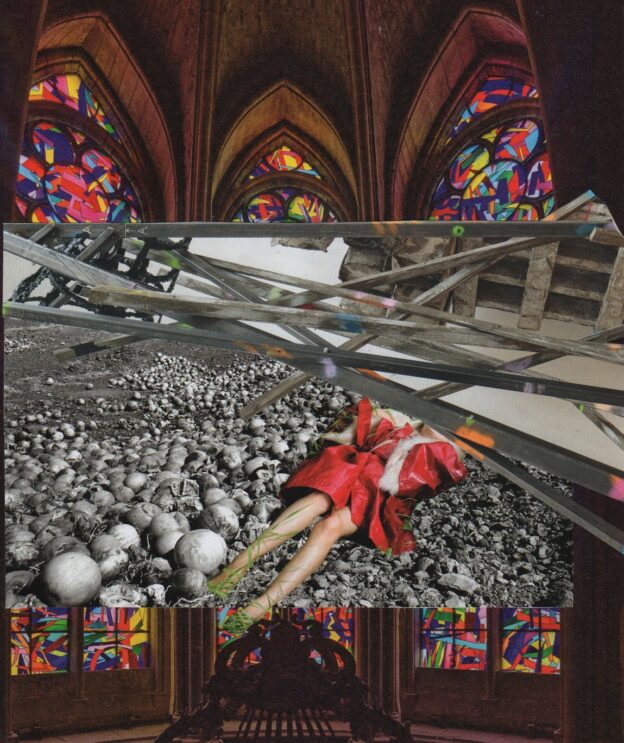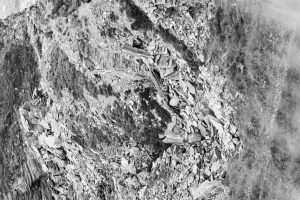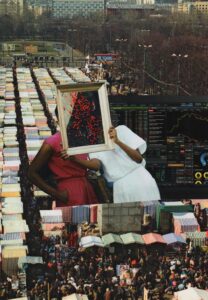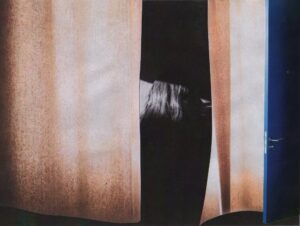In October 1977, deep in the cellars of the Palais Wilson in Geneva, Switzerland (formerly the Headquarters of the Institute of Psychology, and the current headquarters of the Office of the United Nations High Commissioner for Human Rights) there was discovered—by whom, the record does not tell—a box. Inside this box was a trove of personal papers that had languished for forty years. The author of the documents was Sabina Spielrein: psychiatric patient, early analysand, medical student, psychoanalyst, theoretician, and intimate of both Sigmund Freud and Carl Jung.
Of all that is known about Spielrein, this last point—her intimacy with the two ‘fathers’ of psychoanalysis—has, until recently, drawn the most attention from scholars. In popular culture too—thanks to the Hollywood dramatization of John Kerr’s psychoanalytic history A Most Dangerous Method (1993)—Spielrein is remembered primarily as one of Carl Jung earliest patients, and later, his scorned lover. Though the specifics are lost to history, their relationship is loosely outlined in excerpts of Spielrein’s diary and correspondence, published by Dr. Aldo Carotenuto in A Secret Symmetry (1982).
In her diary entry on 11 September 1910 Spielrein writes of Jung: “My love for my friend overwhelmed me with a mad glow. At some moments I resisted violently, at others I let him kiss every one of my little fingers and clung to his lips, swooning with love… That he loves me is certain, but “there is a but”… and that is that… my friend is already married.” To a contemporary reader, looking back at Spielrein’s place in the early history of psychoanalysis from the heart of the #metoo movement, the fact that Jung was not only married, but was also her doctor, her analyst, and later, her professional mentor, would add considerable weight to Spielrein’s gentle statement that “there is a but” when it comes to their love. And it is, in part, this ethical complexity of Spielrein’s place in the history of psychoanalysis, and the lack of consistent, serious attention that she has received since then, that makes a return to her and her work particularly urgent today.
Carotenuto was the first to work with Spielrein’s lost papers, which he draws on to argue that, through her relationship with Jung, she had considerable influence on the development of his thought. According to Carotenuto, Spielrein played a central role in Jung’s theory of transference and countertransference and in his concepts of anima and animus. As Kerr also painstakingly works to prove, the ethical ambiguities of Jung’s and Spielrein’s relationship was also instrumental in the eventual break between Jung and Freud. If one takes Kerr and Carotenuto’s considerable historical research in primary sources and their carefully-wrought arguments seriously, then yes: Spielrein was an instrumental, hidden figure in the history of psychoanalysis by the simple fact of her complex personal involvement, especially with Jung, but also, later, with Freud.
What has so often been overlooked in this careful detailing of the disavowed, scandalous history of early psychoanalysis is Spielrein as a pioneer of the field in her own right: Spielrein published more than thirty essays on psychoanalysis in her lifetime and was a successful analyst to many in Europe and her native Russia. She even conducted the training analysis for famed Swiss psychologist Jean Piaget. Coline Covington remarks in her Introduction to the 2003 collection Sabina Spielrein: Forgotten Pioneer of Psychoanalysis: “What is so remarkable when we begin to look at Spielrein’s writings, many of which remain unpublished in English, is the extent to which she foresaw what we now regard as fundamental psychoanalytical concepts.” What she foresaw is particularly remarkable when it comes to the death instinct, which she articulated in writing a decade before Freud’s famous formulation in 1920 in the pages of Beyond the Pleasure Principle.
Spielrein’s initial work on the death instinct emerged first in 1910, around the time that Freud and Jung founded the International Psychoanalytic Association. During this period, Spielrein and Jung were not speaking after a dramatic fallout, and she was busy working on her dissertation, which focused on a female patient suffering from a diagnosis of schizophrenia, or “dementia praecox,” as it was known at the time. Draft in hand, she re-approached Jung, not for romance, but for his feedback, and for the possibility of publication. Jung, as she put it, “was deeply stirred by the parallels in our thinking and feeling. He told me that seeing this worries him, because that is how I make him fall in love with me.” Such entries reveal how inextricably connected were Spielrein’s—and Jung’s—personal and professional lives, even when she strived against this trend.
Hints of the personal nature of Spielrein’s theoretical and professional work also flicker forth in her best-known essay, an adaptation of her dissertation research entitled Destruction as a Cause of Coming into Being (1911). Spielrein opens the essay and writes: “Throughout my involvement with sexual problems, one question has especially interested me: Why does this most powerful drive, the reproductive instinct, harbour negative feelings in addition to the inherently anticipated positive feelings?” From these suggestive lines, she goes on to weave a tapestry through which she explores the negative element of libido (including, but not limited to, sexuality): the death instinct. At one point in the text, her arguments most clearly predict those articulated by Freud in Beyond the Pleasure Principle. Spielrein implicitly reproaches the basis of the model of the self and psyche that Freud primarily advocated at the time and writes: “In our depths, there is something that, as paradoxical as it may sound, wills self-injury while the ego counteracts it with pleasure. A wish for self-injury, a joy in pain, is, however, thoroughly incomprehensible if we believe merely in the existence of an ego that only desires pleasure.” A decade later, Freud would take much the same critical line in relation to his own system.
At this point, some readers may balk at my suggestion that Spielrein “predicts” Freud’s extension of his pleasure-seeking model of the self, to include a death instinct, in 1920. John Kerr would agree, arguing that Spielrein didn’t really outline a death instinct at all, and dismissing as ridiculous the notion of a death instinct in any form. Whether familiar with Kerr or not, such readers might point out that the intermingling of death and pleasure, Eros and Thanatos, have drawn attention from philosophers since antiquity, and so neither Spielrein nor Freud could have ‘invented’ the concept. In this vein, Pamela Cooper-White writes in ‘The Power that Beautifies and Destroys’: Sabina Spielrein and ‘Destruction as a Cause of Coming into Being,’ her rigorous 2014 article: “Spielrein cannot be credited with the entire concept of a death instinct… but her rendering of it was unique and merited an (albeit somewhat confused) footnote from Freud,” in Beyond the Pleasure Principle. But Spielrein’s early emphasis on the destructive urge that lies within the libido in a psychoanalytic context demands more attention for those interested in tracing a repressed, feminine, and feminist line of thought in the birth and development of psychoanalysis, and also because of a an aspect of her formulation with particular contemporary relevance.
Cooper-White notes that the concept Spielrein outlines is “very different from what either Freud or Jung would eventually propose. Rather than setting libido and aggression/death as opposing internal forces (as Freud does) or relegating the death instinct to a problematic dimension of mental life such as “introversion” (as Jung does) she places destruction within libido, as inextricably interwoven with a cosmic demand that, for life to come into being, life-as-it-is must die.” In Destruction as a Cause of Coming into Being, Spielrein herself writes: “No change can take place without destruction of the former condition.” That is, Spielrein sees destruction not as the oppositional, hidden truth to human drives, but as a necessary stage—a motor—for human (re)creation. From there, her death instinct offers a markedly more hopeful, life-affirming vision of this core element of the human psyche than do either Jung’s or Freud’s.
As the recent scholarly interest in the topic shows, much can be said about Spielrein’s death instinct—for example, the nuance of its intersubjective, collective aspect. But for the purposes of this short essay, I’ll end by suggesting that Spielrein’s unique formulation of the death instinct—insofar as it places destruction as a stage and motor in transformation and creation—might prove especially valuable today as individuals and communities face challenges in the Anthropocene: climate change, radicalization, and the threat of nuclear war. Perhaps we should not see these destructive realities as the inescapable, oppositional truth of human life in late modernity—a view that would correspond more closely to Freud’s formulation of the death instinct. Perhaps instead, a subtle shift in perspective is possible, whereby the destruction inherent in climate change and nuclear armament become the occasion for radical transformation, away from the beliefs and practices that got us into this mess in the first place. Such a shift is only a beginning since, as Spielrein puts it: “Close to our desire to maintain our present condition, there lies a desire for transformation.” We may wish change, but simultaneously, we thrive in continuity, and stasis. As a result, much more radical work is required to address humanity’s stickiest problems—embedded, as they often are, in the fabric of our daily lives. A new perspective on what global catastrophe may portend—rebirth, and not the inevitability of death—can only be a first step.
But the tragic finale of Spielrein’s biography shows the limits to the hopeful potential embedded in destruction. As Karen Hall writes for the Jewish Women’s Archive, after returning to her hometown of Rostov-on-Don, Russia in 1924, Spielrein continued to work and teach as a training analyst, and even opened a psychoanalytic preschool, until Stalin outlawed psychoanalysis in 1936. But then, World War II broke out, bringing forth death on a global scale. As Hall writes: “In 1942, together with both her daughters, Spielrein was shot as a Jew by Germans.” Sometimes, destruction cannot be redeemed.
Written by ANNE MARIE WIRTH CAUCHON
Originally published FEBRUARY 2018
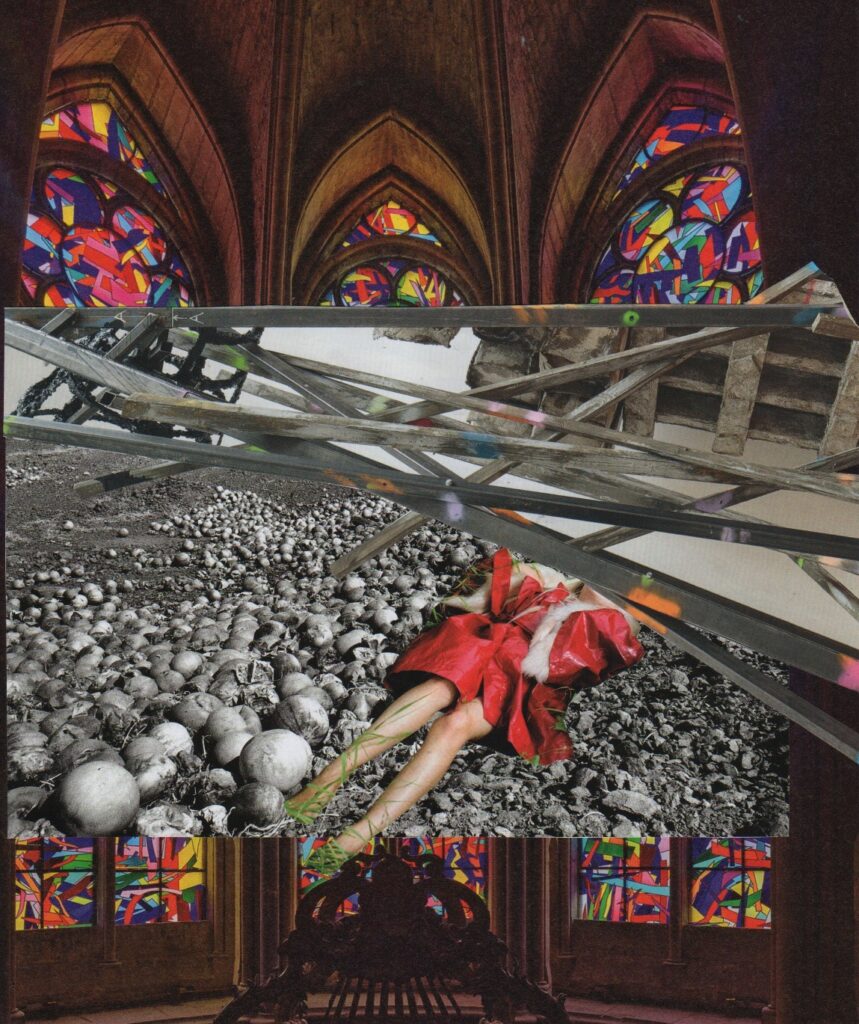
Artwork by KATE HOLFORD
© Copyright for all texts published in Stillpoint Magazine are held by the authors thereof, and for all visual artworks by the visual artists thereof, effective from the year of publication. Stillpoint Magazine holds copyright to all additional images, branding, design and supplementary texts across stillpointmag.org as well as in additional social media profiles, digital platforms and print materials. All rights reserved.
